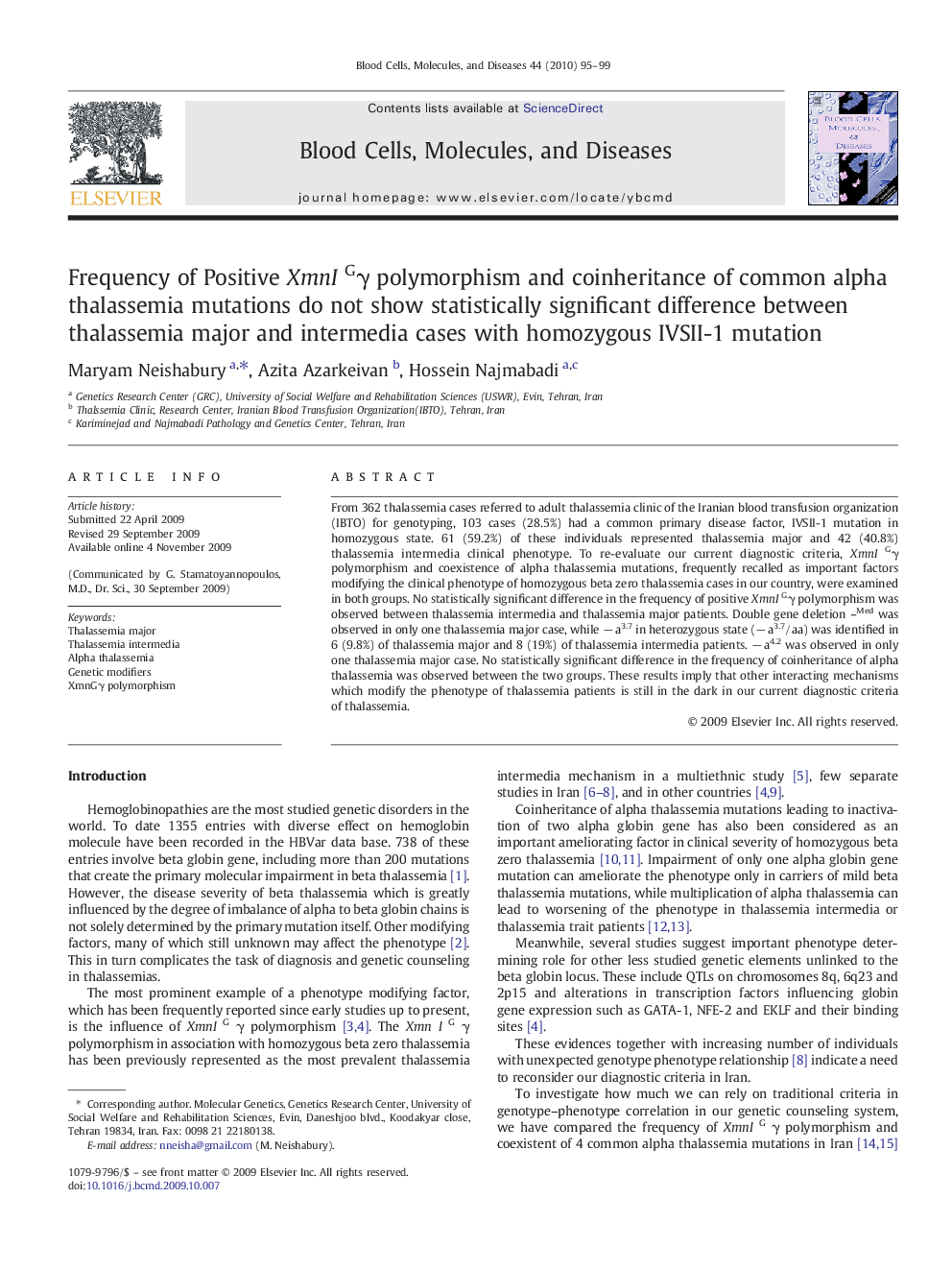| Article ID | Journal | Published Year | Pages | File Type |
|---|---|---|---|---|
| 2827514 | Blood Cells, Molecules, and Diseases | 2010 | 5 Pages |
Abstract
From 362 thalassemia cases referred to adult thalassemia clinic of the Iranian blood transfusion organization (IBTO) for genotyping, 103 cases (28.5%) had a common primary disease factor, IVSII-1 mutation in homozygous state. 61 (59.2%) of these individuals represented thalassemia major and 42 (40.8%) thalassemia intermedia clinical phenotype. To re-evaluate our current diagnostic criteria, XmnI Gγ polymorphism and coexistence of alpha thalassemia mutations, frequently recalled as important factors modifying the clinical phenotype of homozygous beta zero thalassemia cases in our country, were examined in both groups. No statistically significant difference in the frequency of positive XmnI Gγ polymorphism was observed between thalassemia intermedia and thalassemia major patients. Double gene deletion --Med was observed in only one thalassemia major case, while â a3.7 in heterozygous state (â a3.7/aa) was identified in 6 (9.8%) of thalassemia major and 8 (19%) of thalassemia intermedia patients. â a4.2 was observed in only one thalassemia major case. No statistically significant difference in the frequency of coinheritance of alpha thalassemia was observed between the two groups. These results imply that other interacting mechanisms which modify the phenotype of thalassemia patients is still in the dark in our current diagnostic criteria of thalassemia.
Related Topics
Life Sciences
Biochemistry, Genetics and Molecular Biology
Molecular Biology
Authors
Maryam Neishabury, Azita Azarkeivan, Hossein Najmabadi,
